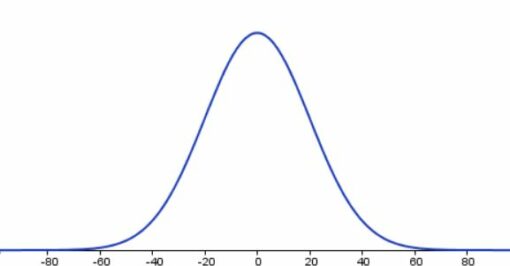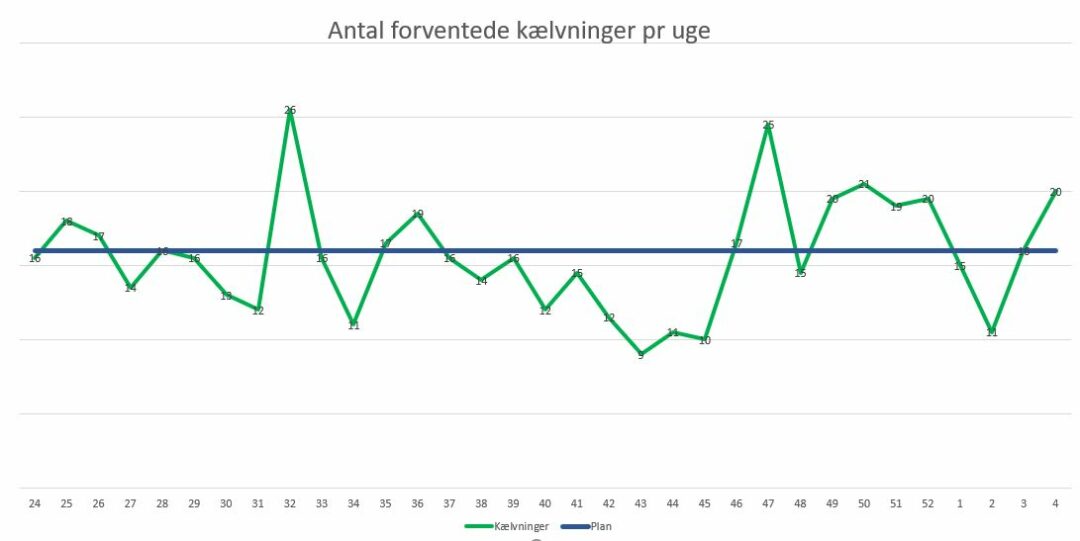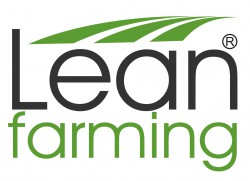This post is also available in:
 Danish
Danish
“It is not so either!”, Someone will say. But at least you can not find anything about dairy cattle farming by google the word. You can not find anything about production planning at SEGES either! In economics, the term is sometimes used in connection with budgets, but it is not used in relation to planning flow in production, as is done in other industries. Why?
At least the answer is not that it is impossible. It can easily be done. The answer is perhaps that we in dairy cattle farming have not thought of production as a company that should produce cheapest and best or what ??

So what is production planning?
It is planning the production in a way so that you get the most out of your buildings, your employees and all the other resources and assets. And you do this by optimizing capacity by making a smooth production flow.
There are now many who are counting on how many heifers they need. There are also many who are trying to smooth out the calvings. Several are aware that heifers must also be inseminated even when they are on pasture, but it is perhaps most driven by the fact that calving age is a focus area.
As yet, fixed numbers per week are not a focus area, but there is plenty to pick up here. Unfortunately, we lack the tools because management programs has most things on a monthly basis and there is also no focus on smooth flow.

Can I plan biological factors?
Yes, you can! You know what pregnancy rate you have in the herd – also how it varies over the year. You know how many days you will need to produce a heifer. You know your mortality rate and many more data. You know how many inseminations you need to get a cow pregnant and you know how many days she is pregnant.
You do not know the exact day a particular cow will calve. You do not need that either, because you may have 10 calvings a week. You know they have an average pregnancy rate of 282 days, but that some calve the week before and approx. just as many in the week after.
Smooth flow is the factor that provides the most efficiency
If you want a more efficient production, then a stable even flow is the single factor that provides the most efficiency for the money. You do not need to invest anything, quite the contrary, because you get a steady utilization of facilities and calf huts e.g.
Your employees do not have to run faster either. They can get a steady rhythm in the work that provides calm, time and space to do the work properly. There are not all of a sudden 20 calvings where you usually have 10. There is no pressure among the young animals, because there are the same number in each group. And so on!
How do I get started?
You can start by seeing how your herd is doing. Take your printout “Expected calving”, where each individual cow and heifer is with the expected calving date. Then count how many there are in each week and paste it on an Excel sheet. Then you get a tool to “get the long light on” – for or at least the next 6-7 months.

In my example above in a herd of 700 cows, there is a variation between 26 and 9 calvings per. week. The goal is 16 every week.
This is how you can get a smooth flow
På kort sigt:
- Sale of pregnant heifers that calve when there are most calvings (if you have a surplus)
På længere sigt:
- Culling of more / fewer cows that calve in the weeks when there are many / fewer calvings
- Sale of heifers in relation to their possible calving week
- Adjustment of inseminations so that insemination is so close to 16 x 2 per week
På lang sigt:
- Regulation of the use of beef cattle semen and dairy cattle semen, so that there is a steady flow of dairy cattle heifers with a high breeding index with a minimum of 4 + 1 = 5 per week.
- If you have poor repro results in the summer, make some more heifers to inseminate for those periods.
You can also call me if you want help with that 😊




